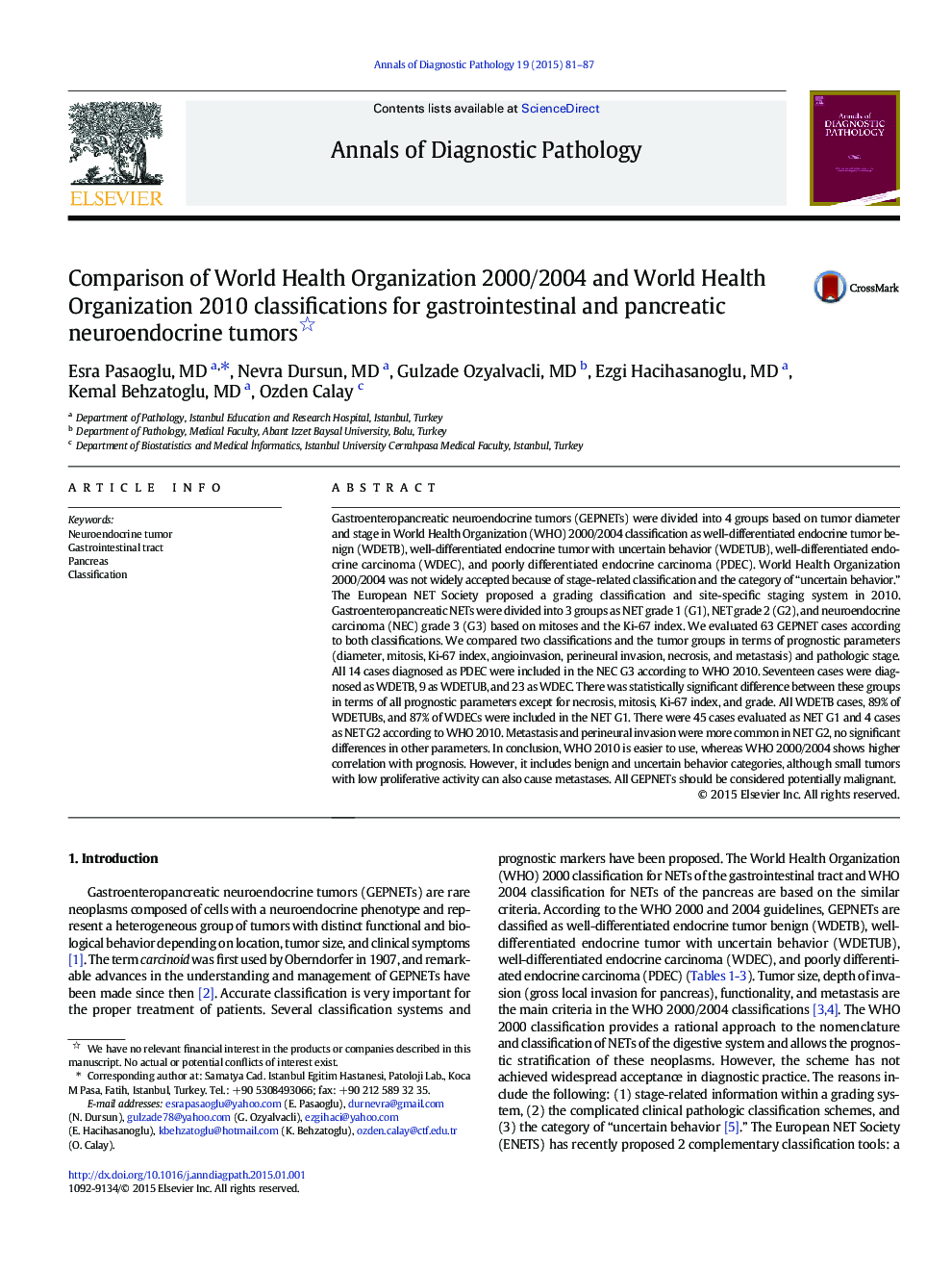| Article ID | Journal | Published Year | Pages | File Type |
|---|---|---|---|---|
| 6214956 | Annals of Diagnostic Pathology | 2015 | 7 Pages |
Gastroenteropancreatic neuroendocrine tumors (GEPNETs) were divided into 4 groups based on tumor diameter and stage in World Health Organization (WHO) 2000/2004 classification as well-differentiated endocrine tumor benign (WDETB), well-differentiated endocrine tumor with uncertain behavior (WDETUB), well-differentiated endocrine carcinoma (WDEC), and poorly differentiated endocrine carcinoma (PDEC). World Health Organization 2000/2004 was not widely accepted because of stage-related classification and the category of “uncertain behavior.” The European NET Society proposed a grading classification and site-specific staging system in 2010. Gastroenteropancreatic NETs were divided into 3 groups as NET grade 1 (G1), NET grade 2 (G2), and neuroendocrine carcinoma (NEC) grade 3 (G3) based on mitoses and the Ki-67 index. We evaluated 63 GEPNET cases according to both classifications. We compared two classifications and the tumor groups in terms of prognostic parameters (diameter, mitosis, Ki-67 index, angioinvasion, perineural invasion, necrosis, and metastasis) and pathologic stage. All 14 cases diagnosed as PDEC were included in the NEC G3 according to WHO 2010. Seventeen cases were diagnosed as WDETB, 9 as WDETUB, and 23 as WDEC. There was statistically significant difference between these groups in terms of all prognostic parameters except for necrosis, mitosis, Ki-67 index, and grade. All WDETB cases, 89% of WDETUBs, and 87% of WDECs were included in the NET G1. There were 45 cases evaluated as NET G1 and 4 cases as NET G2 according to WHO 2010. Metastasis and perineural invasion were more common in NET G2, no significant differences in other parameters. In conclusion, WHO 2010 is easier to use, whereas WHO 2000/2004 shows higher correlation with prognosis. However, it includes benign and uncertain behavior categories, although small tumors with low proliferative activity can also cause metastases. All GEPNETs should be considered potentially malignant.
